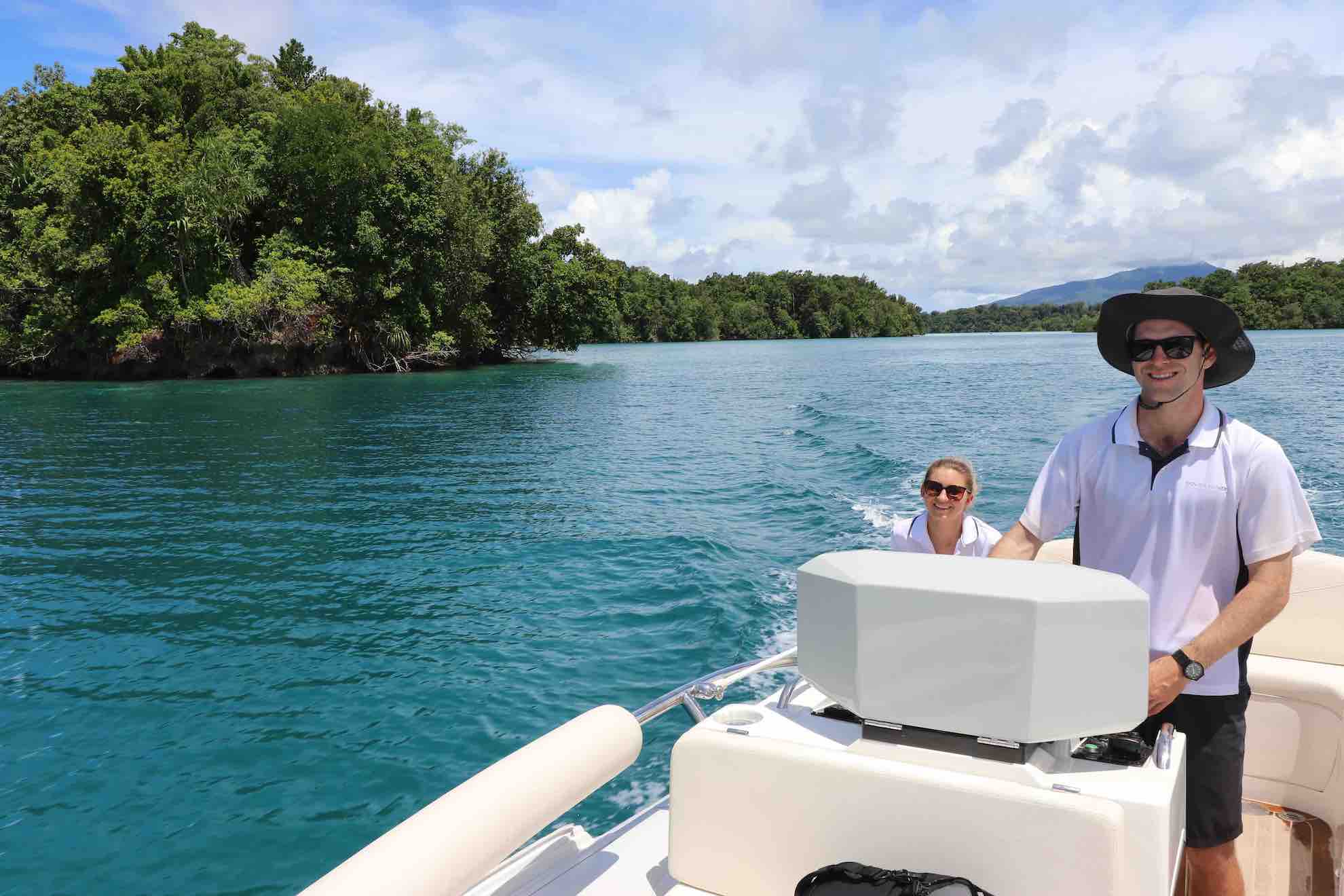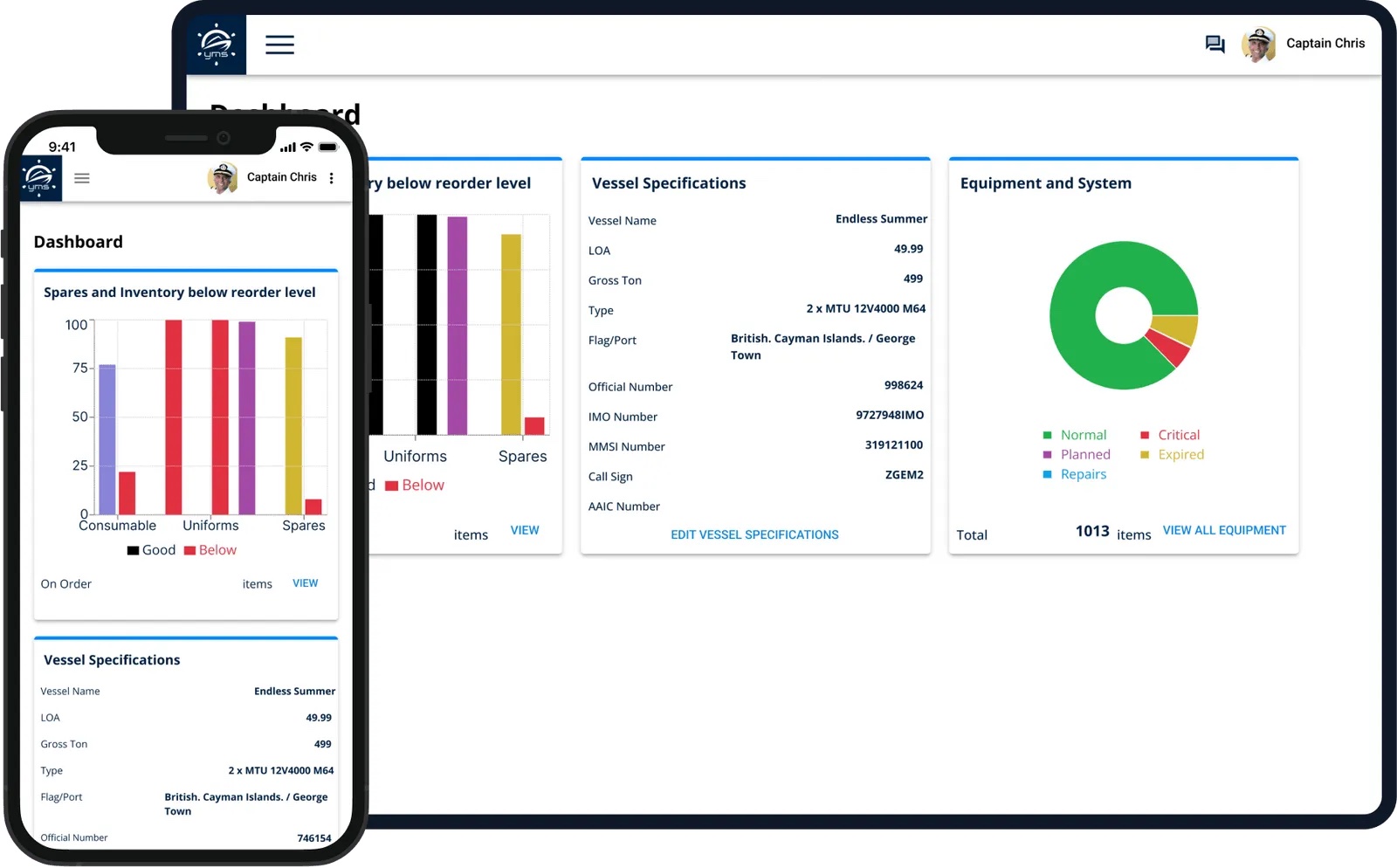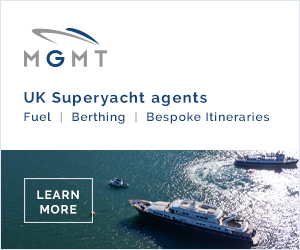When signing up for your first job as a Yacht crew member, you may envision sun-soaked days driving a Superyacht tender or perhaps creating exotic cocktails for guests. Becoming familiar with and using different types of software onboard, such as a Planned Maintenance System, is a less likely dream. However, as the industry embraces digitalisation, these systems will inevitably become a part of yacht crew members’ daily working lives.
In order to discuss the benefits of these systems, we spoke to Joe Whittaker of YMS 360. Having previously had a long career onboard Superyachts, Joe has firsthand experience in using onboard management software and understands how these platforms can vastly improve daily operations for yacht crew. In this article, we gain some insight into Joe’s professional background and hear his predictions for the future of tech in the industry…

SYC: How long did you spend working onboard Superyachts and what was your position onboard?
Joe Whittaker: I spent around 10 years in the industry, working my way up through various roles on Deck. When I finished college, I attended UKSA on the IOW and completed the Superyacht Cadetship. My first role was Junior Deckhand on a 60m motor yacht in the South Pacific. I was incredibly lucky to start and end my career in the Pacific.
Eventually, I worked my way up to First Officer working on 5 different Yachts all in the 50 – 60 m range. My last position was onboard a 50m and I spent 3 years cruising Australia, Indonesia PNG and French Polynesia, I enjoyed every minute of my time working on yachts but cruising the Pacific was an incredible experience.
SYC: What kind of software did you come across during your time onboard yachts?
JW: In the earlier years, I was blissfully unaware of the software used onboard, I was busy polishing Stainless and scrubbing teak. Although, as you progress, you gain more understanding of how the vessel operates and the need to stay compliant with various regulations.
The first time I used a Planned Maintenance System was when covering for the First Officer who was on leave, the vessel was using ‘Triton Administrator Version 4’ (T4), and I needed to scan and upload a Crew Member’s Certificates. At the time I remember it being tedious and thinking I would have rather been on deck. It was only when I moved up to First Officer on a vessel using T5 that I realised how beneficial good software can be.
Working in a position with much more responsibility for the Safe operation of the vessel, a big part of my role was taken up by paperwork and compliance. I spent a lot of time working with T5 in the early months which paid dividends in the long run. We also invested in onboard training for the whole crew which was a huge help in utilising T5 to its full potential.
“Software can be incredibly helpful for all the crew, but on the Deck side, I found that tracking Certificate Expiry both for the Vessel and Crew, made life easier”
SYC: In what ways were these platforms useful onboard?
JW: Software can be incredibly helpful for all the crew, but on the Deck side, I found that tracking Certificate Expiry both for the Vessel and Crew, made life easier. Being reminded when a certificate was 3 months from its expiry date gave me time to plan renewals or tell a crew member about their expiring ENG1.
I also added all the LSA and FFE maintenance in T5 and set staggered schedules. A vessel’s SMS will require certain Maintenance/Checks to be completed on the Life Saving and Fire Fighting equipment, using T5 I could stagger this out over the year and I would be prompted with tasks appearing on my worklist at the start of the month.
For example, I was prompted to check all of the Fire Extinguishers or to test all of the Bridge Deck Smoke detectors etc. Once completed I marked it off on T5 and this saved my history of conducting these critical checks so that I had evidence to present during Flag, Classification and Management audits. Having all of this information on hand in one easy-to-access place really took the stress out of the audits.
SYC: You previously worked with T5 onboard, how did you come to work with Triton Technical and what was your role with them?
JW: We had T5 training onboard with an instructor who works as part of the Support Team for T5, Triton Technical also provided remote IT support for the vessel. Having a small crew means you must have multiple disciplines and I also looked after the AV/IT systems onboard and worked closely with the T5/Triton Technical Team to keep all the systems running and properly maintained.
I built a good working relationship with the team and they provided a great service. When moving ashore, coincidentally we ended up about 10 minutes down the road from the Triton Technical European office, and through the relationships I had built with the team, I applied to work as a Support Technician. I think my experience using T5 and my time spent as a crew member really helped in securing the position.
Read More: YMS 360, The Complete Solution To Vessel Management
SYC: How did your role with Triton Technical allow you to go on to work with YMS 360?
JW: Part of my role was T5 support and naturally the T5 team were excited about developing YMS 360. Over time I was given more and more time to assist with YMS 360, both testing and helping to shape the software. Having worked so recently as crew and using T5 onboard, I was uniquely positioned to give the end-users perspective.
In March, I was offered the role of Product Manager for YMS and started working full-time on the product. It’s a challenging and rewarding role, we are very ambitious and are determined that YMS will be a powerful product that is not only feature-rich but also easy to use and intuitive. We often joke that the more accessible the software is, the harder it is to design, code and test.
“We want YMS to be the one central place the whole crew use to stay organised, compliant and make daily life onboard easier”
SYC: In your opinion, how does YMS 360 differ from competing software platforms?
JW: YMS can help with the core operations for the whole vessel, we are not limiting functionality to one department, the whole crew can track Hours of Rest and their own Inventories. Each Department can track its own Worklists, Tasks, Equipment and Scheduled Maintenance, whether that be Main Engine servicing, Coffee Machine Descaling, or scheduled inspections of the ‘Working Aloft’ safety gear.
We want YMS to be the one central place the whole crew use to stay organised, compliant and make daily life onboard easier.

SYC: What do you perceive to be the future of this type of technology in yachting?
JW: It’s difficult to know how Maritime Specific Software will change over time, we certainly have a lot of ideas and plans in place to expand our product offerings. However, I think it will be dictated by how the industry itself evolves. Software should solve a problem and there needs to be demand for a solution to said problem, as regulations change and new requirements come into force this will create a demand for new software features that help crew keep vessels complaint in a streamlined way.
The key is to understand what the crew need so we can design a solution that works for them. Following the recent IMO resolution regarding compliance for Ship Cyber Security, in the short term, I could see new features being released to help manage this cyber risk. In the long term, who knows? But, it’s great to still be involved in the industry and see how this technology is developing over time.
SYC: What do Yacht Crew need to understand about this type of software?
JW: The key is understanding how the software works and putting in the time and energy upfront to build a solid foundation to work from. Entering all of your planned maintenance schedules for example will be a big task, but once completed, your planned maintenance tasks will appear on your worklist at the appropriate maintenance interval. Then you just need to do the work, mark the task as complete and it will automatically reschedule for you.
The same goes for certificate expiries, and you can even set minimum stock levels on your inventory so you can see if you are running low on important stock.
I would say, read the how-to guides, consider in-person or virtual training to make the most of the software, and spend the time setting everything up initially, you will thank yourself in the long run.
To learn more about YMS 360 and how it works, click here.
For more Career & Training articles, click here.


.gif)
.gif)















